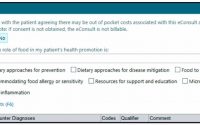Stroke: The food to limit to ‘about a half teaspoon’ a day to reduce your risk of a stroke
Miriam tells Loose Women coming out could be linked to mother's stroke
We use your sign-up to provide content in ways you’ve consented to and to improve our understanding of you. This may include adverts from us and 3rd parties based on our understanding. You can unsubscribe at any time. More info
There are around 1.3 million stroke survivors in the UK, and your symptoms will depend on the part of your brain affected and the extent of the damage. The Stroke Association states: “Many behaviours such as smoking, drinking alcohol or being physically inactive can increase your risk of stroke, along with having high blood pressure, atrial fibrillation, diabetes, or being an unhealthy weight.”
The Stroke Association warned that the catastrophic event occurs every five minutes in the UK.
The Mayo Clinic says that “knowing your stroke risk factors, following your doctor’s recommendations and adopting a healthy lifestyle” are the best steps you can take to prevent a stroke.
Harvard Medical School says: “High blood pressure is a huge factor, doubling or even quadrupling your stroke risk if it is not controlled. High blood pressure is the biggest contributor to the risk of stroke in both men and women.”
To achieve this, it says you may need to reduce the salt in your diet, “ideally to no more than 1,500 milligrams a day (about a half teaspoon)”.

Other key recommendations include:
- Increase polyunsaturated and monounsaturated fats in your diet, while avoiding foods high in saturated fats.
- Eat four to five cups of fruits and vegetables every day, one serving of fish two to three times a week, and several daily servings of whole grains and low-fat dairy.
- Get more exercise — at least 30 minutes of activity a day, and more, if possible.
- Quit smoking, if you smoke.
The National Heart, Lung, and Blood Institute (NHLBI) says anxiety, depression, and high stress levels are all risk factors.
It adds: “Working long hours and not having much contact with friends, family, or others outside the home are also linked with higher risk of stroke.”
The NHS explains: “An unhealthy diet can increase your chances of having a stroke because it may lead to an increase in your blood pressure and cholesterol levels.”
The American Stroke Association (ASA) offers suggestions on what to eat to encourage a stroke-free lifestyle.

It says there are three main risk factors for stroke you can avoid through a healthy diet, which are high blood cholesterol, high blood pressure and excess body weight.
The main stroke symptoms include changes to the face. Your face may have dropped on one side, the person may not be able to smile, or their mouth or eye may have drooped.
Signs may also occur on the arms – “the person may not be able to lift both arms and keep them there because of weakness or numbness in one arm”, says the NHS.
Their speech may be slurred or garbled, “or the person may not be able to talk at all despite appearing to be awake” and “they may also have problems understanding what you’re saying to them”, adds the health body.

It notes: “Even if the symptoms disappear while you’re waiting for the ambulance to arrive, an assessment in a hospital should still be done.
“You should be referred to see a specialist within 24 hours of the start of your symptoms.”
The Stroke Association notes there are 1.2 million people with known atrial Fibrillation (AF) in the UK, as well as an estimated further half a million people with undiagnosed AF.
“The risk of stroke increases five-fold for people with the condition, and it contributes to one in five strokes in the UK. It is therefore essential that AF is better detected, diagnosed and treated,” it states.
Source: Read Full Article


